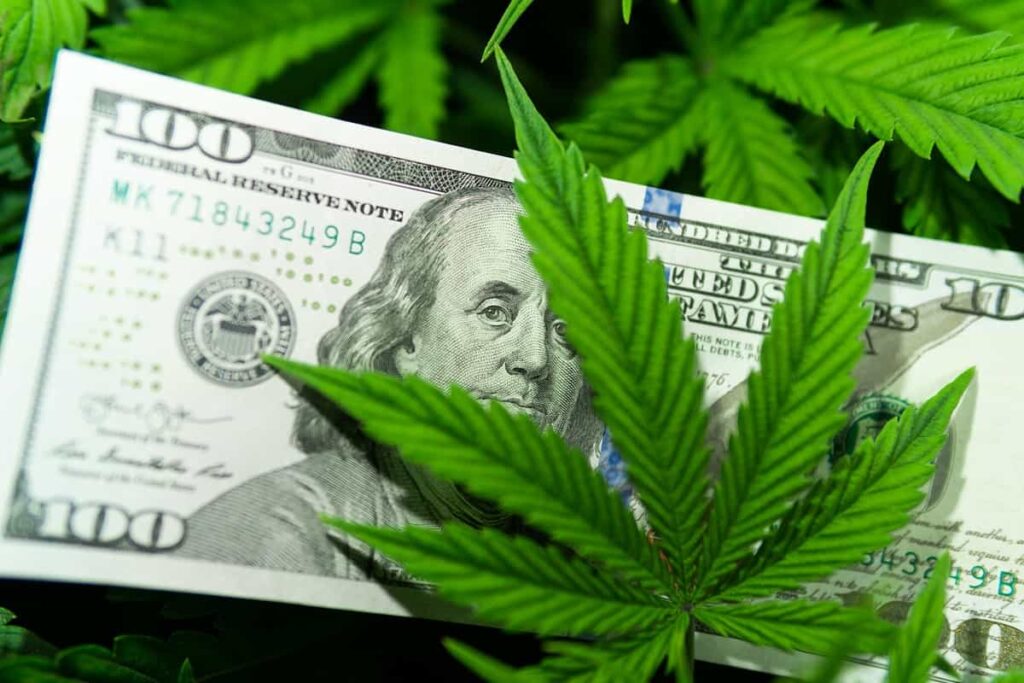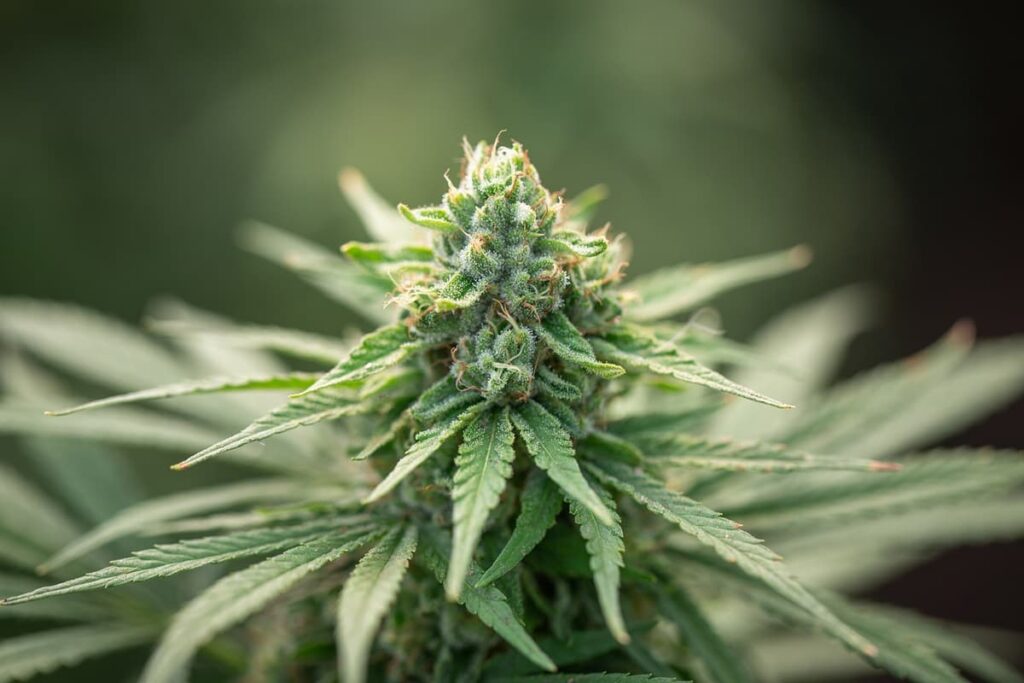Is Weed Legal in Mexico? The answer is yes. Sort of.
Table of contents

There are some things you never forget. Your first kiss. Your first car. Your first bowl of Acapulco Gold. Or even the first time you got high. For us it was running around the urban woods – a thinned-out grove of trees strewn with trash from nearby convenience stores – smoking some dry, seedy bud out of a pipe constructed from a Coke can. We didn’t know any better back then. There was no awareness around strains; whatever we got, we referred to as Mexican dirt weed. It was $25 a quarter ounce, and life was relatively uncomplicated back then. Now there are hundreds of strains, and cannabis is big – and legitimate – business in many U.S. states and a growing number of countries. Canada jumped on the crazy train last month when it legalized recreational weed. But what about our southern neighbor? Is weed legal in Mexico?
The answer is yes. Sort of.
What Weed Legalization in Mexico Might Look Like
By now, you might have read the headlines that the incoming Mexican government is building its own wall seriously considering to legalize cannabis for recreational use nationwide, which would make it only the third country in the world after Uruguay and Canada to do so. Legislators believe legalization might de-escalate violence from the country’s decade-plus-long drug war that the Mexican government estimates to have claimed 235,000 lives. The bill under consideration would allow every citizen to grow up to 20 marijuana plants and produce as much as 17 ounces per year. There are even rules that would permit public use. The bill is not without precedent: In 2016, the country initiated a permit system for medical marijuana, and the government even decriminalized possession of small amounts of cannabis.
Size of the Cannabis Market in Mexico
The new bill takes things much further, with a provision to allow companies to grow and sell weed, opening the doors wide for a new marketplace in a country home to about 130 million people. We’ve read varying estimates of how many people actually smoke weed (everything from seven million to one in four adults) or the potential market size of a legal weed industry in Mexico (up to $2 billion, according to one estimate pulled out of the haze of a 420 pot rally). We do know, thanks to number crunching by a couple of respected cannabis data research firms, that legal marijuana sales are projected to hit a very modest $14 million this year – the equivalent of less than four days in Colorado.
However, the same report projects that Mexico could be one of the top five international markets outside of Canada in the next few years, with the other four being Germany, the UK, Switzerland, and Italy. It predicts weed sales in Mexico could jump as high as $99 million by 2022.
Unfortunately, the bill before the Mexican congress prohibits edibles, including cannabis drinks, which is where companies are allocating a lot of resources, as consumers move away from smoking “flower” to ingesting marijuana in everything from chocolate bars to gummies to extracts. One of the hottest public pot stocks out there, Tilray (TLRY), sees its future in extracts and oil, citing data from Health Canada that dried cannabis sales had a compound quarterly growth rate of 8% compared to 39% for cannabis oil. It’s impossible to say what the final legislation will look like, but prohibiting edibles and other consumables could take a bite out of Mexico’s budding weed industry.
A Legal Cannabis Market Throughout Latin America?
While Mexico could become the first Latin American country to fully legalize weed, it likely won’t be the last. There has been something of a reefer revolución throughout South America, from Colombia to Chile, with Uruguay obviously leading the way. For example, Colombia is particularly ripe for a commercial market, as it already allows medical marijuana, and decriminalized personal possession of less than one ounce. Meanwhile, pharmacies in Chile started carrying medical marijuana products in 2017.

Only a few companies appear positioned to take advantage of a full-on legal weed industry in Mexico and the rest of Latin America, though certainly some of the big players could make inroads quite quickly. Canopy Growth Corporation (CGC), for instance, has a huge war chest that could fuel international expansion plans thanks to a $4 billion investment from Constellation Brands (STZ) during this year’s frenzy over marijuana stocks. And, in fact, Canopy recently started a Latin America affiliate called Canopy LATAM Corporation that acquired Spectrum Cannabis Colombia for a reported $198 million to give Canopy a regional production and distribution center.

Some of Canopy’s rivals have made similar moves. The aforementioned Tilray, which already has a foothold in Europe, acquired a Chilean company called Alef Biotechnology just last month for about $3.8 million. Tilray was already selling its medical products through Alef in Chile, so possibly a small price to pay for removing the middleman. Meanwhile, Aurora Cannabis (ACB) bought ICC Labs in Uruguay for $290 million in September, and Aphria (APHA) picked up a bunch of Latin America- and Caribbean-based assets for $193 million from another Canadian cannabis company called SOL Global Investments Corp. (CN:SCYB), formerly named Scythian Biosciences.
Cannabis Market Moves in Mexico
In Mexico, the still-independent company that most analysts believe will make the most headway under a mostly unfettered marijuana market is Khiron Life Sciences (KHRN), which is traded on the Toronto Stock Exchange’s cousin, TSX Venture Exchange, an all-electronic exchange for emerging companies. While nominally headquartered in Canada, the cannabis producer has its core operations in Colombia. Khiron’s biggest acquisition toward pushing into Mexico was actually in the form of a person – former Mexican president Vicente Fox recently joined its board of directors. The company also hosted a major cannabis conference in Mexico back in May, basically announcing its intention to be a major player in Mexico’s future cannabis economy.

Khiron is also making moves to solidify its position across Latin America, as shown in the graphic above. It recently entered into an agreement with a regional healthcare service provider that represents 100,000 patients that Khiron estimates will be worth an immediate $10.5 million in annual revenue. The company is also showing some savvy in diversifying its services with the launch of a CBD-focused cosmetics brand called Kuida. None of this suggests that you might actually want to buy shares in Khiron, which posted net losses of more than $8 million for the first six months of 2018, without any details about income, aside from the fact that it has about $6.5 million in cash.
And Khiron doesn’t necessarily hold the advantage in Mexico, despite its PR campaign. The Green Organic Dutchman (USOTC:GODF) just entered into a joint venture with LLACA Grupo Empresarial, a specialist in regulatory matters, to create a company to enter the medicinal cannabis market in Mexico. LLACA gives The Green Organic Dutchman immediate access to a distribution network of 4,500 pharmacies and 3,100 supermarkets throughout Mexico. It also helps to have a partner that knows who to bribe the ins and outs of the local political and economic regulatory landscape. Meanwhile, Medical Marijuana Inc. (USOTC:MJNA), which claims to be the first publicly traded marijuana stock in the United States, also has a foothold in Mexico through its HempMeds Mexico subsidiary. The company claims it’s the only one from which Mexicans can get legal permits to import CBD products with a doctor’s prescription.
Conclusion
Now we know the answer to the question: Is Weed Legal in Mexico? The medical cannabis market appears poised to explode, as regulations continue to ease, and Canadian companies scramble to find suitable partners and avenues to expand internationally. Something similar happened in Colorado when the federal government announced, during the early years of the Obama administration, that it would take a hands-off approach to cannabis regulation as long as the states took care of business. Colorado has built one of the biggest marijuana markets in the world since. Mexico could easily scale to a billion-dollar market in the next decade, with all the usual caveats that come with a country mired in government corruption, black market economies, and powerful drug cartels.
The competition to expand into new markets will only increase in tempo for the foreseeable future. Ten U.S. states now have recreational marijuana laws on the books, after Michigan joined the club earlier this month after the Nov. 6 midterm elections. Thirty states allow some form of cannabis consumption, with varying degrees of commercialization around medical or recreational use. And that’s not counting all of the countries like Mexico that are loosening laws or embracing full-on legalization, particularly throughout Latin America. Even Thailand is considering a new law for medical marijuana, meaning you could someday pick up a few grams of Thai Stick from the corner pharmacy, an action that in another time, not long ago, would land you in a roach-infested jail cell for the rest of your life. It’s definitely not the days of Mexican dirt weed anymore.
Sign up to our newsletter to get more of our great research delivered straight to your inbox!
Nanalyze Weekly includes useful insights written by our team of underpaid MBAs, research on new disruptive technology stocks flying under the radar, and summaries of our recent research. Always 100% free.














